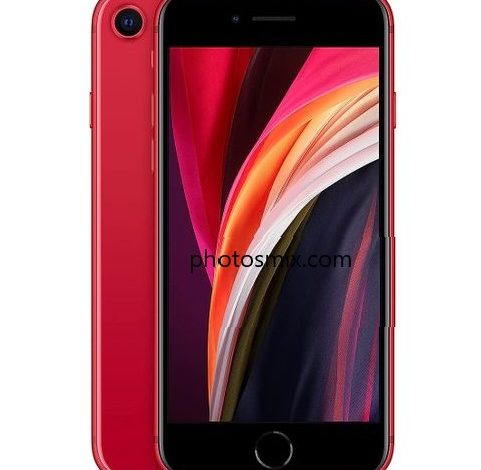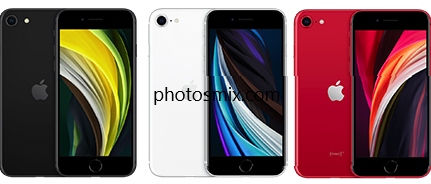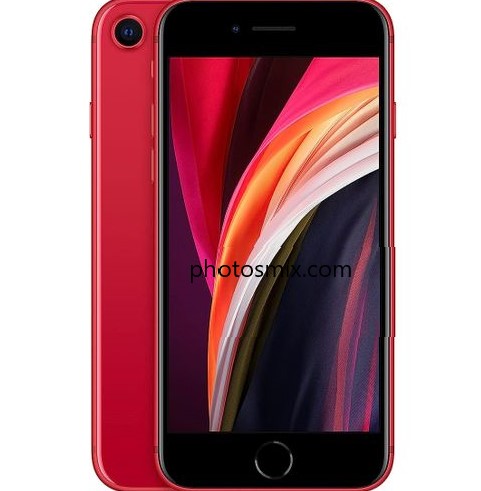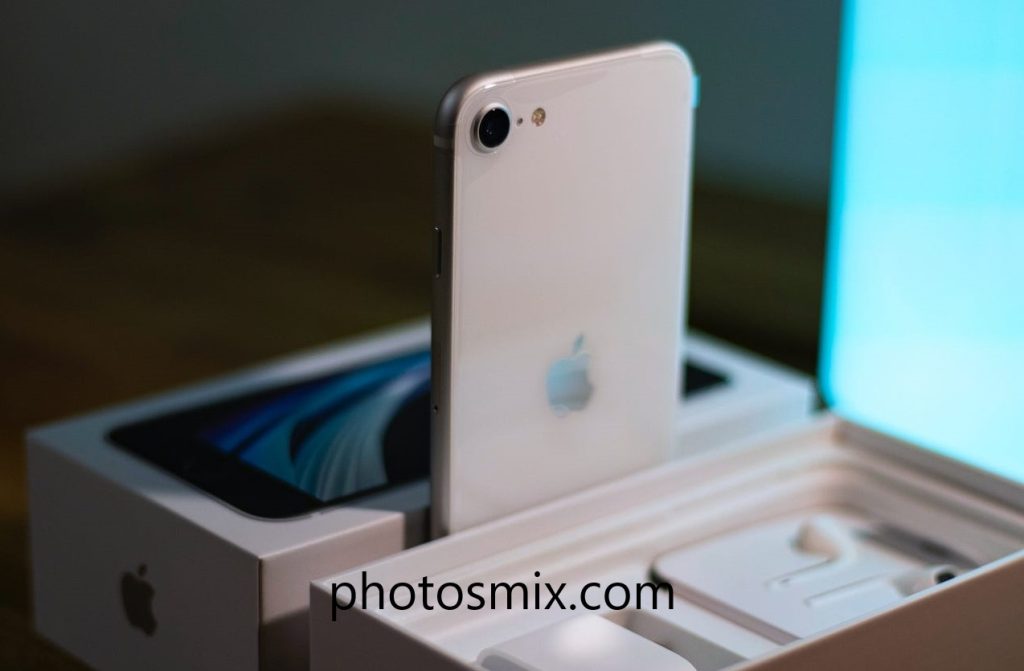Behind the Scenes: The A13 Bionic Chip in the iPhone SE (2nd Gen)

The A13 Bionic Chip is at the heart of the iPhone SE (2nd Gen), offering unprecedented performance and efficiency. This chip, introduced with the iPhone 11 series, has set new standards for speed and power in smartphones. In this article, we will delve into the evolution of Apple’s Bionic Chips, explore the architecture of the A13 Chip, highlight its features and capabilities, analyze its competitiveness, and discuss its implications for the iPhone SE (2nd Gen). Join us as we uncover the technology driving the exceptional performance of this budget-friendly device.
Overview of the A13 Bionic Chip
The A13 Bionic Chip is the powerhouse behind the iPhone SE (2nd Gen), offering unparalleled performance and efficiency. With a staggering 8.5 billion transistors, this chip is a marvel of engineering. It features two main processor cores for handling performance-intensive tasks, an 8-core Neural Engine for machine learning, and a Machine Learning Controller to optimize performance and efficiency. The A13 Bionic Chip sets a new benchmark in smartphone technology, delivering swift and seamless user experiences.
Apple iPhone SE (2020) – Full phone specifications
| NETWORK | Technology | GSM / CDMA / HSPA / EVDO / LTE | ||
|---|---|---|---|---|
| LAUNCH | Announced | 2020, April 15 | ||
| Status | Available. Released 2020, April 24 | |||
| BODY | Dimensions | 138.4 x 67.3 x 7.3 mm (5.45 x 2.65 x 0.29 in) | ||
| Weight | 148 g (5.22 oz) | |||
| Build | Glass front, glass back, aluminum frame | |||
| SIM | Nano-SIM and eSIM | IP67 dust/water resistant (up to 1m for 30 min) | ||
| Apple Pay (Visa, MasterCard, AMEX certified) | ||||
| DISPLAY | Type | Retina IPS LCD, 625 nits (typ) | ||
| Size | 4.7 inches, 60.9 cm2 (~65.4% screen-to-body ratio) | |||
| Resolution | 750 x 1334 pixels, 16:9 ratio (~326 ppi density) | |||
| Protection | Ion-strengthened glass | |||
| PLATFORM | OS | iOS 13, upgradable to iOS 17.4 | ||
| Chipset | Apple A13 Bionic (7 nm+) | |||
| CPU | Hexa-core (2×2.65 GHz Lightning + 4×1.8 GHz Thunder) | |||
| GPU | Apple GPU (4-core graphics) | |||
| MEMORY | Card slot | No | ||
| Internal | 64GB 3GB RAM, 128GB 3GB RAM, 256GB 3GB RAM NVMe | |||
| MAIN CAMERA | Single | 12 MP, f/1.8 (wide), PDAF, OIS | ||
| Features | Quad-LED dual-tone flash, HDR, panorama | |||
| Video | 4K@24/30/60fps, 1080p@30/60/120/240fps, HDR, OIS, stereo sound rec. | |||
| SELFIE CAMERA | Single | 7 MP, f/2.2 | ||
| Features | HDR | |||
| Video | 1080p@30fps; gyro-EIS | |||
| SOUND | Loudspeaker | Yes, with stereo speakers | ||
| 3.5mm jack | No | |||
| COMMS | WLAN | Wi-Fi 802.11 a/b/g/n/ac/6, dual-band, hotspot | ||
| Bluetooth | 5.0, A2DP, LE | |||
| Positioning | GPS, GLONASS | |||
| NFC | Yes | |||
| USB | Lightning, USB 2.0 | |||
| FEATURES | Sensors | Fingerprint (front-mounted), accelerometer, proximity, gyro, compass, barometer | ||
| BATTERY | Type | Li-Ion 1821 mAh, non-removable (6.91 Wh) | ||
| Charging | 18W wired, 50% in 30 min (advertised) 7.5W wireless (Qi) | |||
| Colors: Black, White, Red Models: A2275, A2296, A2298, iPhone12,8 | ||||
| SAR | 1.17 W/kg (head), 1.16 W/kg (body) SAR EU: 0.98 W/kg (head), 0.99 W/kg (body) | |||
| Price | $120.00 / €159.00 / £118.50 | |||
| TESTS | Performance | AnTuTu: 462253 (v8) GeekBench: 3237 (v5.1) | ||
| Display | Contrast ratio: 1544:1 (nominal) | |||
| Loudspeaker | -24.1 LUFS (Very good) | |||
The significance of the A13 Bionic Chip in the iPhone SE (2nd Gen)
The A13 Bionic Chip in the iPhone SE (2nd Gen) holds immense significance for users. With its unmatched performance and efficiency, the chip enables seamless multitasking, enhanced gaming experiences, and faster app launches. The chip’s Neural Engine also allows for advanced machine learning capabilities, empowering the device to deliver superior camera features and improved battery life. The A13 Bionic Chip sets a new standard for smartphone performance, making the iPhone SE (2nd Gen) a powerful and reliable device for users in various use cases.
Evolution of Apple’s Bionic Chips
Apple’s Bionic Chips have undergone significant evolution over the years. Starting with the A11 Bionic Chip, each subsequent generation has brought improvements in performance, energy efficiency, and machine learning capabilities. With the introduction of the A13 Bionic Chip, Apple has set a new standard for smartphone processors, offering unprecedented speed and efficiency. This ongoing evolution showcases Apple’s commitment to pushing the boundaries of chip technology and delivering superior user experiences.
History of Apple’s Bionic Chip series
Apple’s Bionic Chip series has a rich history of innovation and technological advancement. It all started with the introduction of the A11 Bionic Chip, which brought significant performance improvements to Apple devices. Over the years, Apple has continued to refine and enhance their chip technology, leading to the development of the A12 and A13 Bionic Chips, each setting new benchmarks in speed and efficiency. This evolution showcases Apple’s commitment to driving the future of chip design and delivering unmatched performance in their devices.
Improvements from the A12 to the A13 Chip
The transition from the A12 to the A13 chip marked a significant leap in performance and efficiency for Apple devices. With the A13 chip, Apple introduced a more advanced CPU and GPU architecture, resulting in a 20% boost in overall performance compared to the A12. The A13 chip also showcased improved energy efficiency, allowing for longer battery life and better power management. These enhancements enabled smoother multitasking, faster app launches, and improved gaming experiences on devices powered by the A13 Bionic chip.
A13 Bionic Chip Architecture
The A13 Bionic Chip boasts a cutting-edge architecture designed to deliver exceptional performance and power efficiency. It features a 6-core CPU and a 4-core GPU, enabling seamless multitasking and immersive graphics. Additionally, the chip incorporates an 8-core Neural Engine for advanced machine learning capabilities. These components work together harmoniously, providing the iPhone SE (2nd Gen) with unparalleled speed, responsiveness, and intelligence. The A13 Bionic Chip truly represents a breakthrough in mobile processor architecture.
Key components of the A13 Bionic Chip
The A13 Bionic Chip is composed of several key components that work together to deliver exceptional performance. It features a 6-core CPU, consisting of two high-performance cores called Lightning and four energy-efficient cores called Thunder. The chip also incorporates a 4-core GPU, enabling immersive graphics. Additionally, it includes an 8-core Neural Engine, which provides advanced machine learning capabilities. These components are at the heart of the A13 Bionic Chip, delivering unparalleled speed, responsiveness, and intelligence.

Performance enhancements and efficiency gains
The A13 Bionic Chip in the iPhone SE (2nd Gen) brings significant performance enhancements and efficiency gains. With its 6-core CPU and 4-core GPU, the chip delivers unparalleled speed and graphics capabilities. The 8-core Neural Engine enables advanced machine learning, powering features like facial recognition and augmented reality. These improvements result in faster app loading, smoother multitasking, and improved overall efficiency, enhancing the user experience on the iPhone SE.
Features and Capabilities
The A13 Bionic Chip in the iPhone SE (2nd Gen) enables a wide range of features and capabilities. With its powerful processing capabilities, the chip supports advanced computational photography features, including Portrait mode, Portrait Lighting effects, and Depth Control. The chip also enhances camera quality, augmented reality experiences, and gaming performance. Overall, the A13 Bionic Chip offers a seamless and immersive user experience on the iPhone SE. [17] [18]
Features enabled by the A13 Bionic Chip
The A13 Bionic Chip in the iPhone SE (2nd Gen) provides a range of powerful features. With its machine learning capabilities and advanced image signal processor, the chip enables a new camera experience with enhanced computational photography features. Users can enjoy Portrait mode, Portrait Lighting effects, and Depth Control for stunning photos. Additionally, the chip supports intelligent apps that utilize machine learning and Core ML, enhancing the overall user experience. The A13 Bionic Chip also ensures great battery life for the iPhone SE.
Enhancements to camera quality, AR capabilities, and gaming performance
With the A13 Bionic Chip, the iPhone SE (2nd Gen) delivers significant enhancements to its camera capabilities. Users can enjoy stunning photos with the 12-megapixel f/1.8 aperture Wide camera, thanks to the advanced image signal processor and Neural Engine. The chip also improves AR capabilities, allowing users to experience immersive augmented reality experiences. Furthermore, the A13 Bionic Chip enhances gaming performance, enabling smoother gameplay and more realistic graphics. These enhancements provide users with an elevated visual experience across various multimedia applications.
Competitive Analysis
In a competitive smartphone market, the A13 Bionic Chip in the iPhone SE (2nd Gen) stands out as a powerhouse. Compared to other smartphone processors, the A13 Bionic Chip offers impressive performance and efficiency gains. With its 8.5 billion transistors and advanced neural engine, it delivers unmatched processing power and AI capabilities. Benchmark performance tests showcase its superiority, and real-world usage scenarios demonstrate its ability to handle demanding tasks with ease. The A13 Bionic Chip solidifies the iPhone SE (2nd Gen) as a formidable competitor in the smartphone industry.
Comparison of the A13 Bionic Chip with other smartphone processors
The A13 Bionic Chip in the iPhone SE (2nd Gen) surpasses other smartphone processors in terms of both performance and efficiency. With its 8.5 billion transistors and advanced neural engine, it outperforms competitors in benchmark tests. Real-world usage scenarios demonstrate its ability to handle demanding tasks seamlessly. The A13 Bionic Chip solidifies the iPhone SE (2nd Gen) as a formidable competitor in the smartphone industry[25].

Benchmark performance and real-world usage scenarios
The A13 Bionic Chip has been extensively tested for its benchmark performance and real-world usage scenarios. In benchmark tests, the A13 Bionic Chip outperforms other smartphone processors, demonstrating its superior speed and efficiency. Users have reported seamless multitasking, fast app launches, and smooth gaming experiences with the iPhone SE (2nd Gen). The A13 Bionic Chip solidifies its position as a powerhouse in the smartphone industry. [27][28]
Conclusion
In conclusion, the A13 Bionic Chip in the iPhone SE (2nd Gen) showcases Apple’s commitment to innovation and performance. With its advanced architecture and powerful components, the A13 chip offers exceptional speed, efficiency, and enhanced features for a superior smartphone experience. As technology continues to evolve, we can expect further advancements in Apple’s chip technology, promising even greater capabilities and user satisfaction. The A13 Bionic Chip sets a new standard in smartphone performance, solidifying Apple’s position at the forefront of the industry. [31]
Implications of the A13 Bionic Chip for the iPhone SE (2nd Gen)
The A13 Bionic Chip in the iPhone SE (2nd Gen) brings significant implications for the device. With its advanced performance and efficiency, the A13 chip enables the iPhone SE to deliver exceptional speed, improved battery life, and enhanced features. Users can expect seamless multitasking, faster app launches, and smoother gaming experiences. Additionally, the A13 chip lays the foundation for future software updates and ensures the device remains relevant and capable for years to come. [31]
Future developments in Apple’s chip technology and the impact on consumer experience
Apple’s continuous innovation in chip technology is expected to have a profound impact on the consumer experience. As Apple pushes the boundaries of performance and efficiency with each new chip iteration, users can anticipate even faster speeds, improved battery life, and enhanced capabilities. This will enable seamless multitasking, smoother gaming, and advanced features in future iPhone models. Consumers can look forward to a more immersive and powerful experience as Apple’s chip technology continues to evolve. [33]





